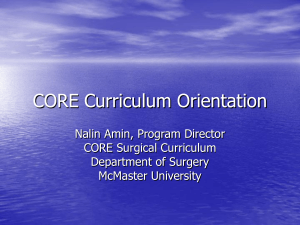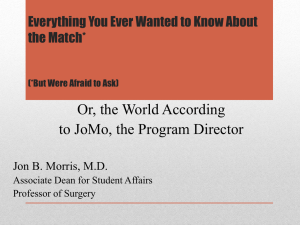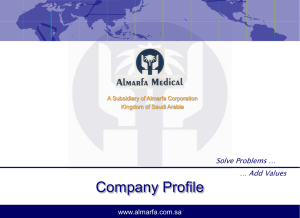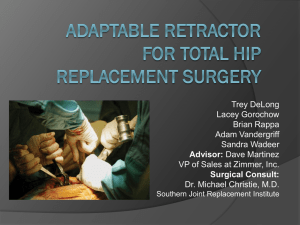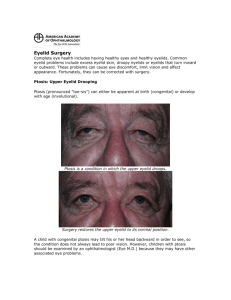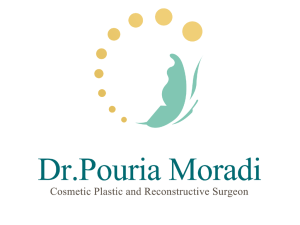Tear Duct Surgery - James S. Linder, MD, PC
advertisement
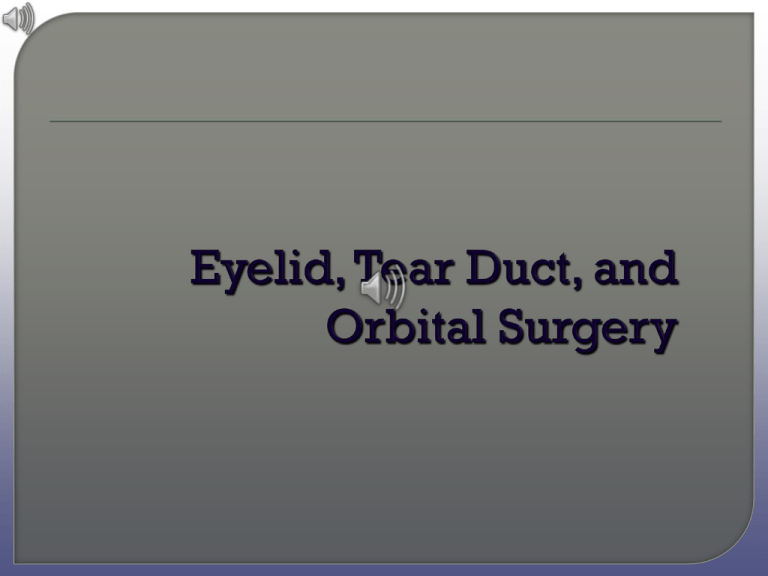
Upper and lower eyelid • Blepharoplasty • Ptosis Repair Brow surgery – Entropion Repair – Ectropion Repair • Brow ptosis repair Tear duct • DCR (re-routing of the tear duct) • Lacrimal intubation Orbital surgery • Fracture repairs • Tumor removal • Decompression resulting from Thyroid Disease Botox Juvederm Radiesse Cosmetic Eyelid Surgery St. Francis Surgery Center Methodist Germantown Surgery Center Tri-State Surgery Center LeBonheur East Surgery Center Saint Francis Hospital Methodist Germantown Hospital Baptist East Hospital Regional Hospital of Jackson Skin to be removed is marked. Incision is made along the skin markings on the upper eyelid. Skin, muscle, and fatty tissue are removed. For a ptosis repair, the muscle that raises the lid is also tightened. Before After Before After Entropion Repair • Is a surgical procedure to fix an eyelid that is turning back towards the eye Ectropion Repair • Is a surgical procedure to fix an eyelid that is turning outward. For an ectropion repair, the lower tendon at the outer corner of the eye is exposed and tightened using an internal suture. For an entropion repair, additional sutures are placed in the lower eyelid to help rotate the lid out, away from the eye. Before After After Before After As we age, the fatty tissue under our eyelids tends to protrude, and the lids sag. In order to repair this, an incision is made either inside the lid to remove the fatty tissue (transconjunctival blepharoplasty) or The incision can also be made below the lashes and extended to the outer corner. This is called a transcutaneous blepharoplasty. With this approach, some excess skin can also be removed. There are many scenarios which can cause a person to experience excessive tearing • Eye irritation • Dry eyes (ironically) • Lower eyelid laxity • Blocked tear ducts The first two can be treated with drops The last two may require surgery The tear duct is like the drain in a sink, if it gets clogged, tears will run over the lid and down the face (epiphora). • There a few reasons a tear duct can fail to drain properly • The duct can narrow or close due to • Age (women, generally, have narrower tear ducts) • Chronic eye infections • Sinus/Allergy problems • Chronic use of eye drops and some chemotherapy • Previous trauma or placement of punctal plugs • The duct may have a “stone” blocking the passage. 17 Minor tear duct surgery can be done in the office with local anesthesia. These procedures usually involve removing a foreign body or enlarging the opening. This may also involve irrigation of the lacrimal system. 17 Major tear duct surgery which typically involves re-routing the tear duct is done in the operating room under general anesthesia. This procedure is called a DCR. To begin, a small, half inch, incision is made between the eye and the nose. A new, internal opening is made between the tear sac and the inside of the nose, re-routing the path through which tears drain. • • Lastly, a small, flexible, silicone tube is placed, and acts as a stint to keep the new duct open. This tube is generally kept in place for about 6 weeks and is removed easily through the nose, in the office. 19 For upper or lower lid surgery • Bruising generally lasts for 1 to 2 weeks 2 weeks if upper and lower eyelids are done simultaneously • Swelling can take a full month to go down, but a majority of it will decrease in the first week • For the first 24-48 hours, you should keep ice on the lids and sleep with your head elevated. • You will apply antibiotic ointment to the incisions twice a day, until your post-op appointment one week after surgery. • This type of surgery is typically not painful and pain medication is not usually needed after 1-2 days. 21 Tear duct surgery • Is similar to the eyelid surgery course • Bruising and swelling is usually limited to one side • There is some additional risk of bleeding from the nose since part of the procedure requires work in the nose. • You would need to be off of any blood thinners 5 to 7 days before surgery, unless otherwise discussed. • You may need to get a letter from the physician who monitors this stating that it is fine to be off the blood thinner. Some examples of blood thinners include Over the Counter Aspirin Vitamin E Ginko Ginseng Garlic supplement Fish Oil Prescription Plavix Coumadin (or Warfarin) Pradaxa Aggrenox Ticlid Efient 24 Although eyelid and tear duct surgery is typically safe and uneventful, it is still surgery. Usual risks include: • • • • • • Bleeding, which could affect your eyesight Scarring Infection Asymmetry Need for additional surgery Anesthesia – Anesthesia staff will discuss with you before surgery If you did not schedule your procedure on your initial visit, we will get in touch with you over the next few days to set this up. We are generally booked out about two weeks in advance. • • If you have a commercial insurance (CIGNA, BCBS, Aetna, United, etc), certain types of eyelid surgery may require pre-authorization. This can take up to 4-6 weeks. Medicare does not require pre-authorization. 28 Thank you for giving us the opportunity to take care of you. If you have any questions during this process, please call the office at (901) 680-1990, and speak to one of our staff members.




